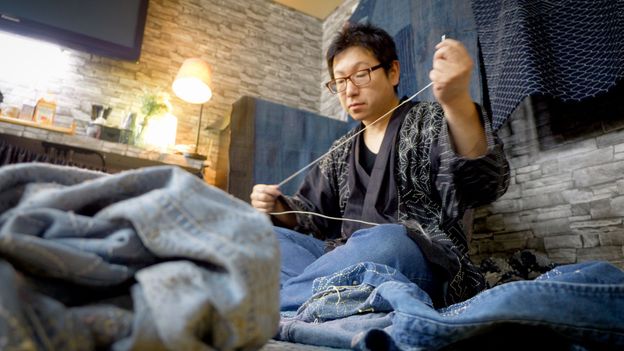   
CEO Picks - The best that international journalism has to offer!
 S31 S31Psychedelics Seem to Change How Fast Our Brains Learn -- Researchers Might Finally Understand How   There are times when the brain can make rapid, enduring changes, leaving an indelible imprint on the brain.The human brain can change — but usually only slowly and with great effort, such as when learning a new sport or foreign language or recovering from a stroke. Learning new skills correlates with changes in the brain, as evidenced by neuroscience research with animals and functional brain scans in people. Presumably, if you master Calculus 1, something is now different in your brain. Furthermore, motor neurons in the brain expand and contract depending on how often they are exercised — a neuronal reflection of “use it or lose it.”
Continued here
|
 S1 S1
 S2 S2The AI Hype Cycle Is Distracting Companies   Machine learning has an “AI” problem. With new breathtaking capabilities from generative AI released every several months — and AI hype escalating at an even higher rate — it’s high time we differentiate most of today’s practical ML projects from those research advances. This begins by correctly naming such projects: Call them “ML,” not “AI.” Including all ML initiatives under the “AI” umbrella oversells and misleads, contributing to a high failure rate for ML business deployments. For most ML projects, the term “AI” goes entirely too far — it alludes to human-level capabilities. In fact, when you unpack the meaning of “AI,” you discover just how overblown a buzzword it is: If it doesn’t mean artificial general intelligence, a grandiose goal for technology, then it just doesn’t mean anything at all.
Continued here
|
 S3 S35 Ways to Future-Proof Your Career in the Age of AI   What can we do personally to stave off the displacement that may happen as a result of AI? In this article, the authors offer five strategies to future-proof your career in the age of intelligent machines: 1) Avoid predictability. It’s important to remember that AI isn’t generating new insights; it’s a prediction engine that merely guesses the most likely next word. 2) Hone the skills that machines strive to emulate. 3) Double down on “the real world.” 4) Develop your personal brand. 5) Develop recognized expertise in your field. Even if AI performs “first draft” functions, it still has to be double-checked by a trusted and reliable source. If that’s you, you’ll continue to be sought out because you have the authority to vet AI’s responses.
Continued here
|
 S4 S44 Areas of Cyber Risk That Boards Need to Address   In our technology-dependent society, the effectiveness of cyber risk governance of companies affects its stock prices, as well as short-term and long-term shareholder value. New SEC cybersecurity rules provide a solid basis for transparency. Unfortunately, monitoring the long-term effectiveness of a cyber risk management strategy is not easy to grasp. This article provides four critical areas investors should be informed about for evaluating its long-term effectiveness.
Continued here
|
 S5 S5 Why Pay Transparency Regulations Are a Strategic Management Opportunity   Our special report on innovation systems will help leaders guide teams that rely on virtual collaboration, explores the potential of new developments, and provides insights on how to manage customer-led innovation.Our special report on innovation systems will help leaders guide teams that rely on virtual collaboration, explores the potential of new developments, and provides insights on how to manage customer-led innovation.Touted as one remedy to the gender wage gap, pay transparency laws are increasingly being rolled out across the United States at the state and local levels. Nine states — including New York, as of September — are currently regulating some aspect of pay disclosure. The National Women’s Law Center reports that altogether, more than one-quarter of U.S. employees live in a location where pay information is regulated.
Continued here
|
 S6 S6The Eras Tour film has already grossed more than $100m. The Taylor Swift economy is unstoppable.   Taylor Swift: The Eras Tour didn't hit screens until 12 October – a date the superstar moved up, as a surprise for fans – yet AMC Theatres announced worldwide ticket pre-sales had already exceeded $100m (£81.5m). First-day sales alone topped $26m, breaking box office records. Many industry experts expect the film to land among Barbie and The Super Mario Bros. Movie – both of which have grossed upwards of $1.3bn (£1.06bn) to date – for biggest opening weekends of the year.As astounding as these figures are, they're just another part of the economic effect of Taylor Swift's massive Eras Tour, which kicked off 17 March at 70,000-seat State Farm Stadium in Arizona, US. The tour has grossed an estimated $1bn, and will continue to smash records as Swift takes it to Canada, South America, Asia, Australia and Europe into late 2023 and 2024. Most dates are already sold out.
Continued here
|
 S7 S7The 300-year-old Japanese method of upcycling   Earlier this year, visitors to the Metropolitan Museum of Art's Kimono Style would have been treated to a stunning example of Japanese craftsmanship. Made in the late 1800s, the Meiji Period, the fisherman's jacket or donza featured indigo-dyed sleeves and tunic delicately sewn over with white geometric patterns using sashiko, a quilting technique of simple running stitches used to reinforce or patch textiles – or, as in this jacket, join layers of cloth together, in a technique known as boro. The piece had a particular flourish: the yarns were dyed with small geometric patterns before being used to sew and stitch. This luxurious adjunct aside, the jacket's makers would have been astonished at the sight of it hanging on the wall of one of the world's most prestigious museums. Sashiko emerged through necessity, particularly in poor rural areas, during the Edo period. "Cotton came late to the north of Japan," explains craft and design writer Katie Treggiden. "So the only way people could get hold of it was as tiny rags of fabrics, that were either passed around or bought from tradesmen from the south. Sashiko – literally, 'little stabs' – was a way of connecting all those little pieces into a quilted fabric, known as boro, that would keep them warm."
Continued here
|
 S8 S8
 S9 S9The hidden risks of buy now, pay later: What shoppers need to know   Buy now, pay later is a relatively new form of financial technology that allows consumers to purchase an item immediately and repay the balance at a later time in instalments.Unlike applying for a credit card, buy now, pay later doesn’t require a credit check. Instead, these programs use algorithms to perform “soft” credit checks to determine a shopper’s eligibility.
Continued here
|
 S10 S10India's accusation of 'terrorism' is a ploy to hide its own human rights abuses   Prime Minister Justin Trudeau has accused India of being involved in the assassination of Hardeep Singh Nijjar, a Canadian Sikh leader, on Canadian soil. Narendra Modi’s right-wing Hindu nationalist Indian government is defiant and denies involvement. Indian officials have instead admonished Canada for being a “safe haven” for Sikh “terrorism,” a pejorative for Sikh self-determination.
Continued here
|
 S11 S11The impact of work on well-being: 6 factors that will affect the future of work and health inequalities   Work has long been considered a social determinant of health. Like housing, education, income security and other matters of economic and social policy, work can be a key factor in creating, maintaining or exacerbating unequal health outcomes across different societal groups. In these articles, we suggest that if public health bodies and policymakers put greater focus on improving the work environment, it could achieve major gains in population health and reduce health inequities.
Continued here
|
 S12 S12How climate change-induced stress is altering fish hormones -- with huge repercussions for reproduction   In 1981, scientists discovered that female fish exposed to high temperatures developed testes instead of ovaries. Since then, over 1,100 studies on different animal species, including 400 on freshwater fish, have found similar results.Fish reproductive organs are highly adaptable to environmental changes as, unlike mammals, they have simple structures. Remarkably, even slight changes in water conditions can directly and significantly impact fish metabolism and physiology.
Continued here
|
 S13 S13How the 'laws of war' apply to the conflict between Israel and Hamas   The killing of Israeli civilians by Hamas and retaliatory airstrikes on the densely populated Gaza Strip by Israel raises numerous issues under international law.Indeed, President Joe Biden made express reference to the “laws of war” in comments he made at the White house on Oct. 10, 2023, noting that while democracies like the U.S. and Israel uphold such standards, “terrorists” such as Hamas “purposefully target civilians.” Speaking the same day, the European Union’s top diplomat Josep Borrell condemned Hamas’ attack but also suggested that Israel was not acting in accordance with international law by cutting water, electricity and food to civilians in Gaza.
Continued here
|
 S14 S14 S15 S15 S16 S16 S17 S17'I hope I've honoured you well': Shanelle Dawson reclaims her mother's story in one of two new books on Lyn Dawson   When Shanelle Dawson was just four years old, her parents were at the centre of a suburban tragedy when Lyn Dawson suddenly went missing. Her mother’s disappearance would not be classified as murder until 2001, with her father eventually held responsible for the crime in 2022.Just hours after her mother disappeared from her life, Shanelle’s teenage babysitter, Joanne Curtis (whom she refers to as “J” in her new book) moved into her mother’s bed, wore her mother’s clothes, and (from 1984), her mother’s wedding ring.
Continued here
|
 S18 S18Slime after slime: why those biofilms you slip on in rivers are vitally important   You might have noticed it after sliding on a rock in a Melbourne creek. Or it could have been wading through a Northern Territory waterhole. It’s slime, and our rivers are full of it. That’s a good thing. Wherever there are hard surfaces like snags and rocks in our rivers, you’ll find slime. Or, as ecologists call it, biofilm. Biofilms consist of communities of microorganisms that include algae, cyanobacteria, bacteria, fungi and protozoa. Together, they’re fixed in a matrix of natural polymers made by bacteria and other tiny creatures. It’s this matrix which gives the slippery, slimy texture we encounter when swimming in rivers.
Continued here
|
 |
TradeBriefs Publications are read by over 10,00,000 Industry Executives About Us | Advertise Privacy Policy Unsubscribe (one-click) You are receiving this mail because of your subscription with TradeBriefs.
Our mailing address is GF 25/39, West Patel Nagar, New Delhi 110008, India |




























































